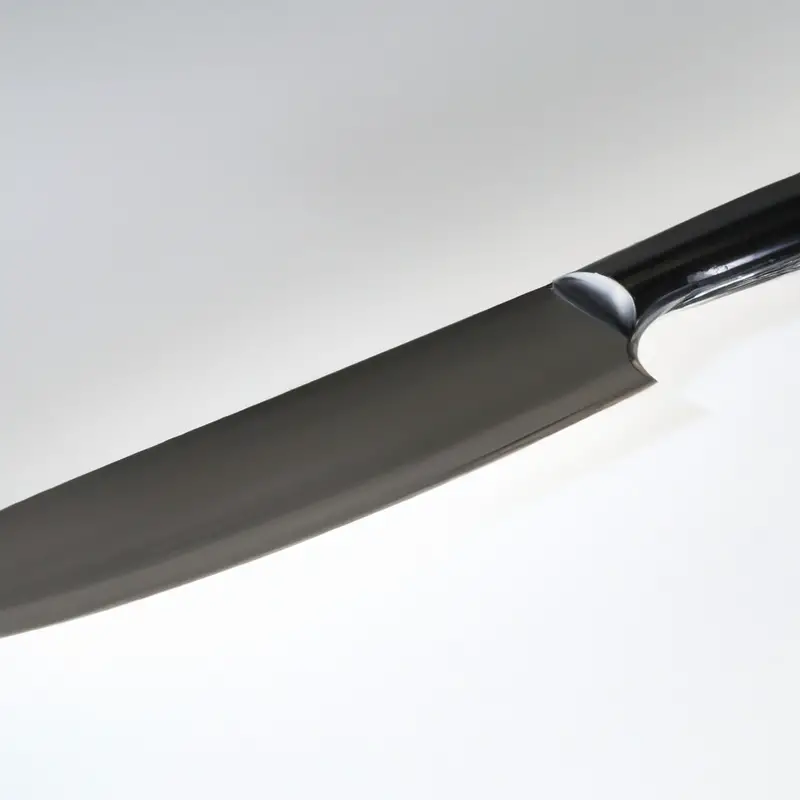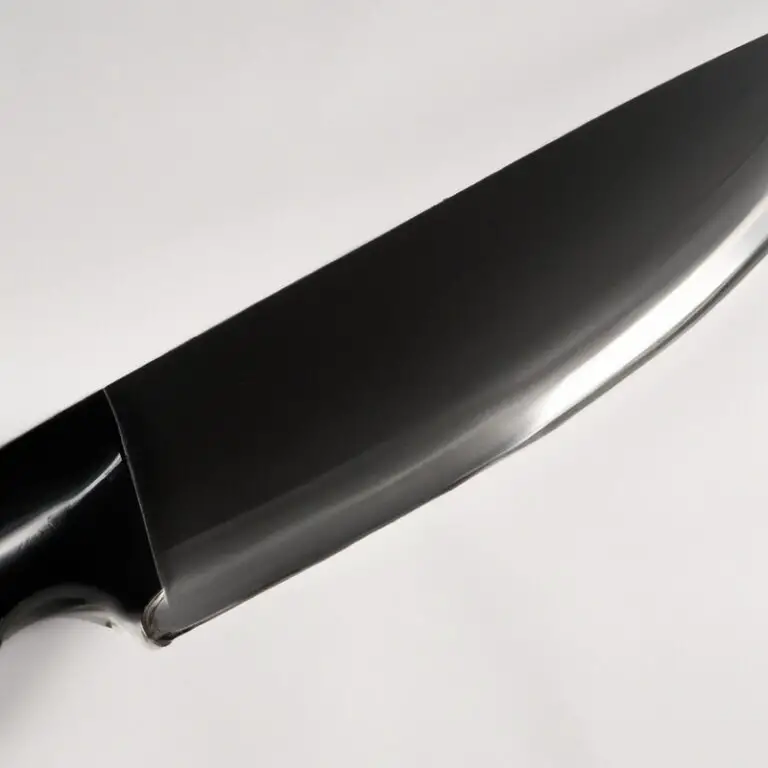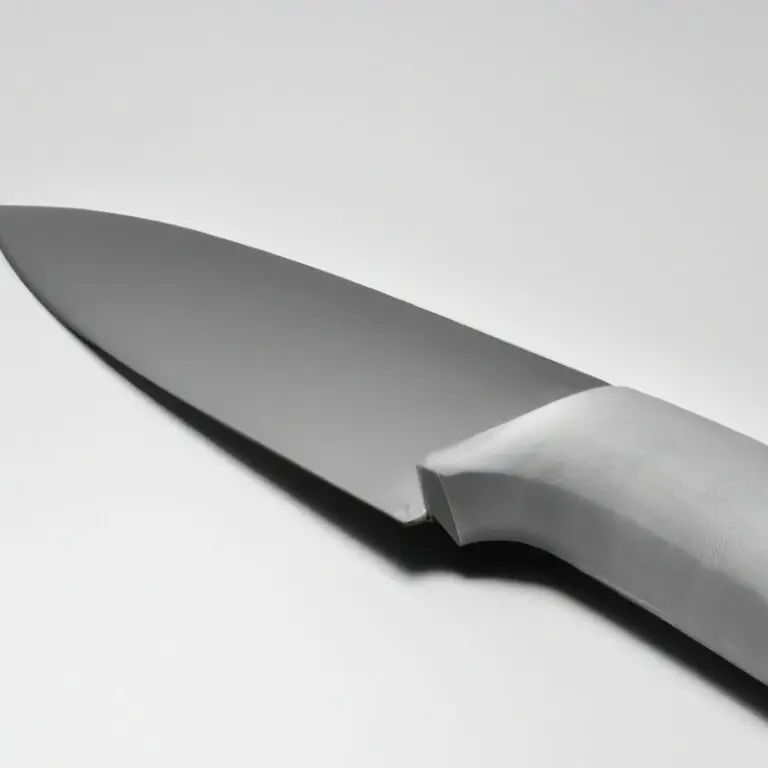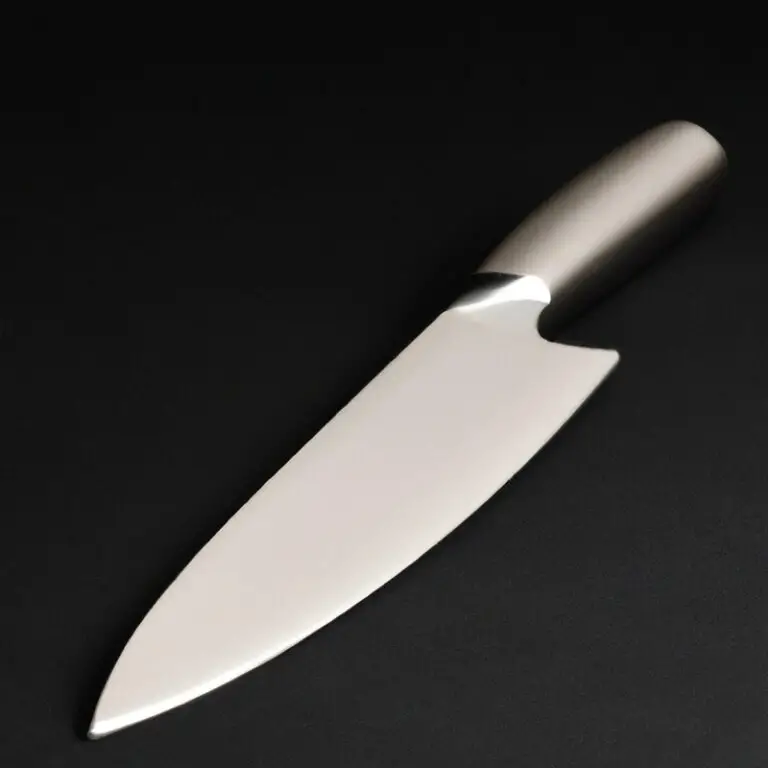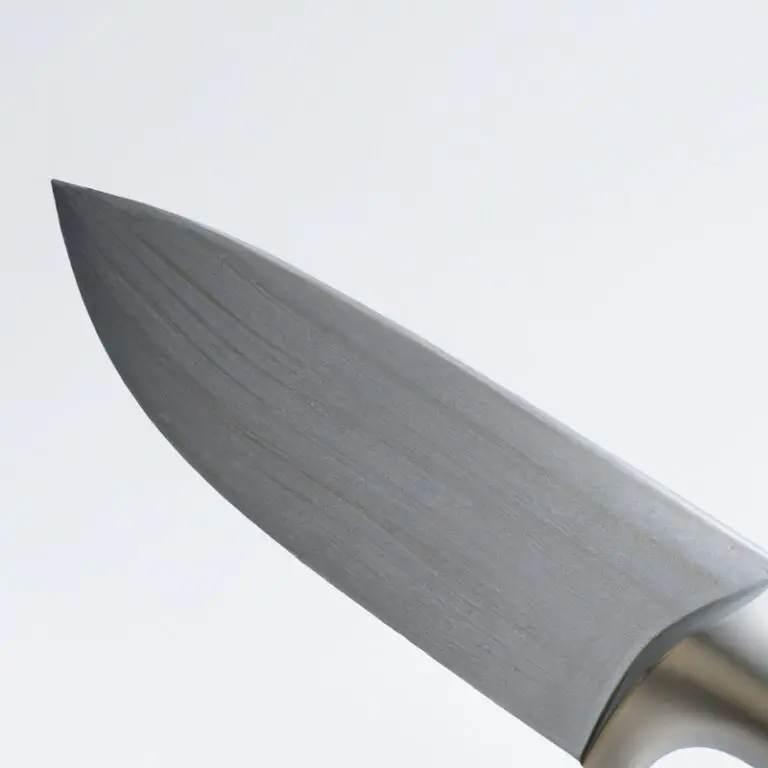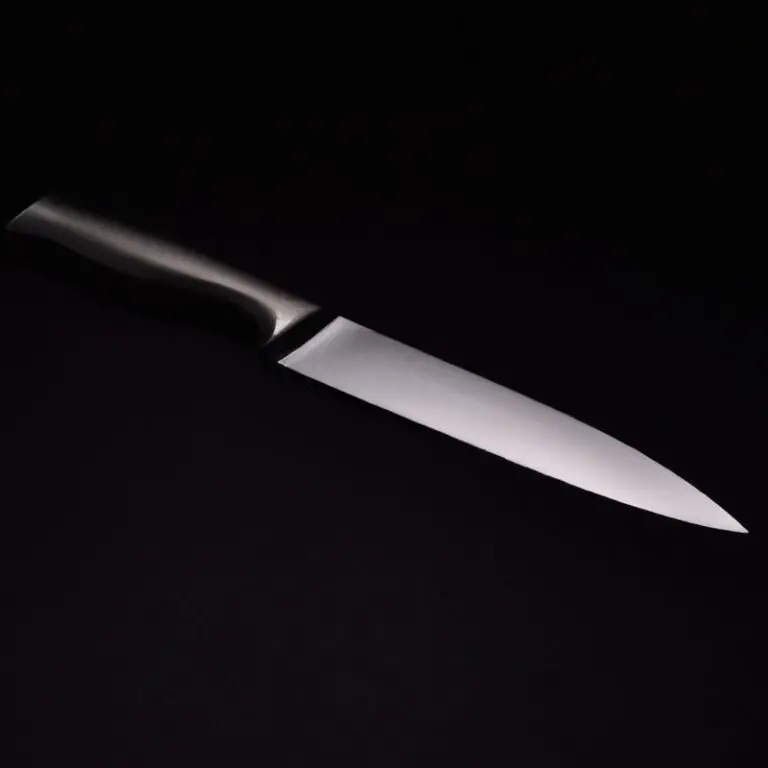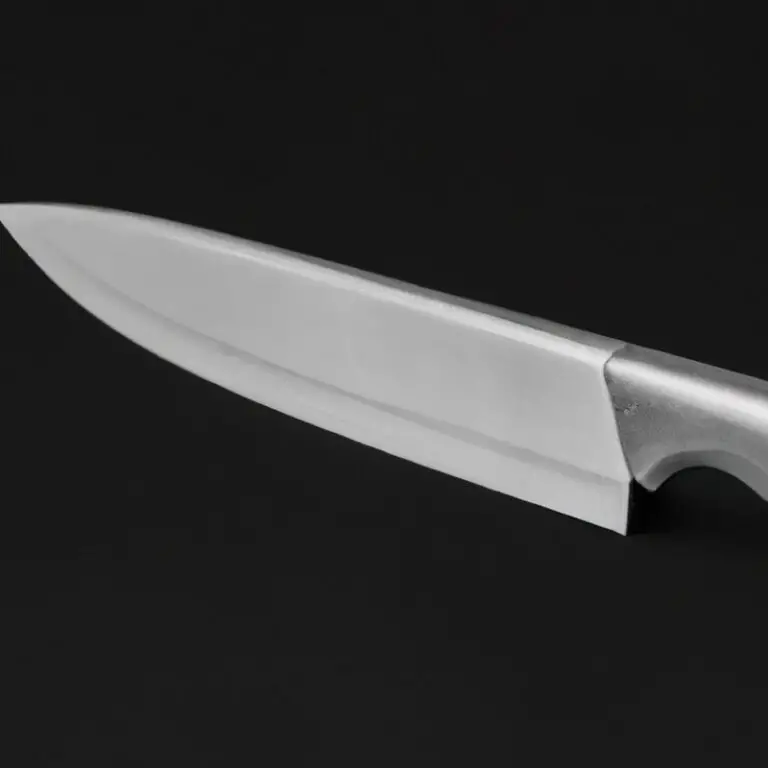What Are The Recommended Materials For a Santoku Knife? Essential Guide
Key Takeaways:
- High-quality steel is the most important material for a Santoku knife.
- A comfortable and durable handle material, such as wood or synthetic composite, enhances the functionality of a Santoku knife.
- A well-made Santoku knife requires a balance between the blade and handle materials to achieve optimal results.
- Choosing the appropriate materials for a Santoku knife is essential for achieving the desired cutting performance and longevity.
If you’re a fan of Japanese cuisine, you’ve probably heard about the famous Santoku knife. But what makes it different from other chef knives?
Well, one of the factors is the materials used to make it.
Choosing the right materials can make a huge difference in the knife’s performance, durability, and overall value. In this article, we’ll explore the best materials for a Santoku knife, including blade and handle materials, the benefits of traditional Japanese materials, and modern innovations.
So whether you’re a professional chef or a home cook, keep reading to learn how to choose the perfect Santoku knife based on its materials.
| Material | Pros | Cons |
|---|---|---|
| High Carbon Steel | Sharp edge, durable, easily sharpened | Maintenance required, prone to rust |
| Stainless Steel | Low maintenance, rust-resistant | Difficult to sharpen, less sharp edge |
| Damascus Steel | Distinctive appearance, sharp edge, durable | Expensive, difficult to sharpen, may not be suitable for heavy use |
| Ceramic | Extremely sharp edge, lightweight, rust-resistant, low maintenance | Fragile, can chip or break easily |
Understanding the Santoku Knife: What Makes it Different from Other Knives?
The Santoku knife is a unique Japanese knife that differs from other knives in several ways. Firstly, its blade has a flatter edge angle than other knives, making it ideal for slicing and chopping tasks that require a straight cut.
The Santoku knife also has a shorter blade length than traditional Western-style knives, making it easier to maneuver and control.
Secondly, the Santoku knife’s blade has a Granton edge, which results in air pockets between the blade and the food being cut. This feature minimizes sticking, promoting smooth and fast cutting.
Thirdly, the Santoku knife has a unique balance point.
Unlike Western-style knives, the Santoku knife balances at the midpoint of the blade, giving it a lighter feel overall. This aspect makes it a more suitable tool for extended use without causing fatigue.
Lastly, the Santoku knife features a straighter handle that aligns directly with the blade.
The handle has a traditional Japanese shape, which provides a comfortable and ergonomic grip for users. Overall, the Santoku knife sets itself apart from other knives with its unique combination of features, balance, and design.
Its distinct features make it a versatile and reliable tool for all types of kitchen tasks.
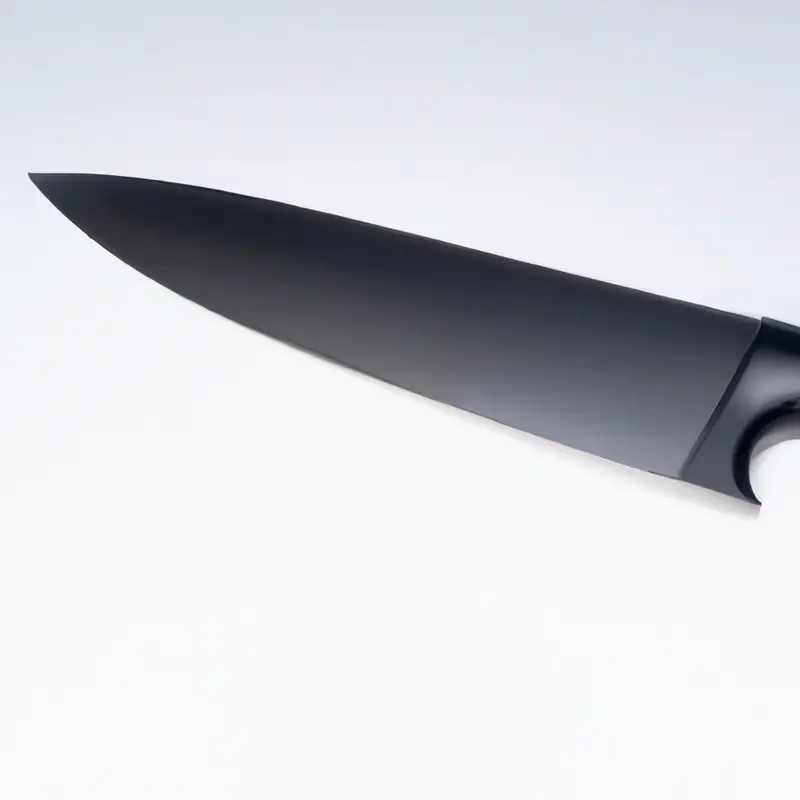
Why Choosing the Right Materials for a Santoku Knife is Important
Choosing the right materials for a Santoku knife is essential to ensure that the knife performs at its best. The blade of a Santoku knife should be made of high-quality steel that has sharpness, hardness, and durability.
It should have the right blend of carbon and chromium to make it corrosion-resistant, and the right level of hardness to hold an edge.
Additionally, the handle should be made of materials that offer a comfortable and firm grip to prevent accidents while slicing, chopping, or dicing. Materials such as resin, wood, or even plastic can offer a comfortable grip for extended periods while being non-slippery.
Ultimately, choosing the right materials is crucial to ensure the longevity and performance of a Santoku knife.
Poor quality materials can substantially impact the knife’s edge retention, sharpness, and durability, reducing its performance and requiring frequent replacement. Therefore, investing in a Santoku knife made of high-quality materials is a wise choice for any individual looking for an excellent kitchen knife.
Blade Materials: A Comprehensive Guide to the Best Steel for Santoku Knives
Santoku knives are admired for their ability to slice, dice, and chop various ingredients with ease. The blade material plays a significant role in the sharpness, durability, and overall performance of the knife.
When selecting a Santoku knife, it is crucial to pay attention to the blade material.
Here are some of the best steel options for Santoku knives:
- VG10 Steel: It is one of the most popular materials, known for its exceptional sharpness and corrosion resistance.
- AUS-10 Steel: It is another high-quality steel used in Santoku knives, well-known for its durability and ability to hold an edge over time.
- Damascus Steel: It is a beautiful and functional material that combines different types of steel to create a unique pattern while also providing excellent sharpness and durability.
- High-Carbon Stainless Steel: This material provides a perfect balance between durability and sharpness, making it a great choice for Santoku knives.
- Blue Steel: This Japanese steel offers exceptional sharpness and edge retention.
Ultimately, the choice of blade material depends on individual preferences and needs. It is important to consider the unique characteristics of each option and choose the one that best suits your needs.
With proper care and maintenance, a well-made Santoku knife can last a lifetime.
Handle Materials: What to Look for in a Santoku Knife Handle
The handle on a Santoku knife is just as important as the blade itself. When choosing a handle material, look for options that are comfortable to grip and offer a secure, non-slip surface.
Popular handle materials for Santoku knives include wood, composite materials, and various types of plastic.
Wooden handles, such as rosewood or ebony, are a popular choice due to their natural feel and classic look. Composite materials, such as G-10 or Micarta, are also popular due to their durability and resistance to water and heat.
Plastic handles, such as POM or ABS resin, are budget-friendly options that are easy to clean and maintain.
Regardless of the material you choose, ensure that the handle has a full tang – meaning the blade continues through the handle to provide optimal balance. Other considerations include handle size and grip type, so be sure to choose a material that best suits your individual needs and preferences.
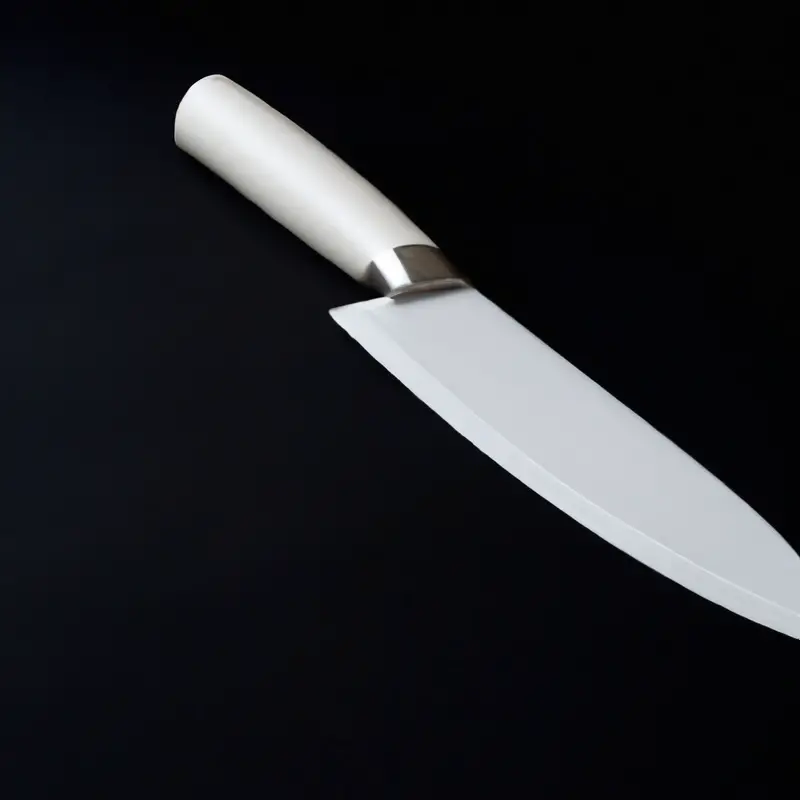
Blade Shapes and Grinds: Finding the Perfect Cutting Edge for Your Santoku Knife
The blade shape and grind are crucial factors for finding the perfect cutting edge on your Santoku knife. Santoku knives typically have a straight edge blade with a slightly curved tip and a flat spine.
The flat spine provides stability while the slightly curved tip allows for a rocking motion when cutting through ingredients.
When it comes to the grind, there are two main types – the hollow grind and the flat grind. The hollow grind has a concave shape and is ideal for slicing and chopping through soft foods, while the flat grind is more suited for cutting through denser ingredients.
Additionally, it’s important to consider the angle of the blade’s edge.
Santoku knives generally have a 10 to 15-degree angle, making them sharper than traditional Western knives. When selecting a Santoku knife, look for a blade shape and grind that will suit your specific cooking needs.
Consider the types of ingredients you will be cutting most frequently to determine which blade will provide the most efficient and effective cuts for your kitchen.
Finding the Right Balance: The Science Behind the Weight Distribution of a Santoku Knife
The weight distribution of a Santoku knife is essential, as it impacts balance, precision, and control. The weight should be evenly distributed along the blade and handle to prevent fatigue and ensure safe handling.
A Santoku knife’s blade is typically shorter and wider than other knives, which means the weight distribution is unique.
The balance point should be in the front third of the blade, allowing the user to apply force and control the cut’s direction with ease. The handle’s size and shape also play a role in the weight distribution.
A comfortable grip is necessary to balance the blade, with the blade’s weight centered in the user’s hand.
Manufacturers aim for a balanced Santoku knife by designing the blade and handle to complement each other’s weight. Cheaper models may not have a well-balanced design, making them more challenging to handle and control.
In summary, selecting a balanced Santoku knife is crucial for precise cutting, safety, and reducing fatigue.
Manufacturers’ design effort plays a critical role in creating well-balanced Santoku knives.
The Benefits of Traditional Japanese Materials for Santoku Knives
Traditional Japanese materials for Santoku knives offer unique benefits in terms of strength, durability, and sharpness. The use of high carbon steel with a fine-grained structure allows for a razor-sharp edge that retains its sharpness for a longer period.
Additionally, the unique composition of the steel, which typically includes a higher percentage of carbon, allows for increased hardness and durability.
Japanese knife-makers also utilize a layered construction technique called “Damascus” to create blades with a beautiful pattern and increased strength. The layers of steel are forged together through a process of repeated folding, resulting in a blade with a unique and stunning appearance.
For the handle, traditional materials such as magnolia wood, ebony, and buffalo horn provide a comfortable and ergonomic grip.
These materials are also resistant to water and humidity, which helps to prevent bacterial growth and ensure a longer lifespan for the knife. Overall, the use of traditional Japanese materials in Santoku knives offers a blend of beauty and practicality.
The careful consideration of materials and construction techniques allow for a knife that performs exceptionally well and is a joy to use.
Modern Innovations: New Materials for Better Performance and Durability in Santoku Knives
Modern innovations have led to the development of new materials to enhance the performance and durability of Santoku knives. One such material is ceramic, which is lightweight, corrosion-resistant, and retains its sharpness for longer than traditional steel.
Another material is Damascus steel, which features multiple layers of different types of steel, resulting in a durable, sharp, and unique blade.
Titanium is also gaining popularity due to its strength and resistance to corrosion. Additionally, advanced polymer materials are being used for knife handles, offering ergonomic designs and improved grip.
Overall, these new materials provide Santoku knives with enhanced cutting power, longevity, and overall usefulness in the kitchen.
The Importance of Maintenance: Proper Care for Your Santoku Knife’s Materials
Proper maintenance is crucial to ensure your Santoku knife retains its sharpness and durability over time. It is essential to keep the blade clean and dry after use, as moisture can cause corrosion and damage the steel.
Use a mild dish soap and warm water to clean it and avoid the dishwasher, as it can cause the handle to warp.
Sharpen your Santoku knife regularly using a sharpening stone or honing rod to maintain its sharpness and cutting precision. Remember to oil the blade occasionally to prevent rust and protect the steel.
With proper care, your Santoku knife can last you a lifetime and remain a valuable addition to your kitchen.
How to Choose the Perfect Santoku Knife Based on Its Materials
When choosing a Santoku knife based on its materials, consider the following factors:
- Blade Material: Look for high-quality steel, such as VG-10 or Damascus, for sharpness and durability.
- Handle Material: Choose a comfortable and non-slip handle material, like Pakkawood or G-10.
- Blade Shape and Grind: Consider a flatter blade with a hollow grind for precision cutting.
- Balance: Opt for a well-balanced knife with weight distributed evenly between the blade and handle.
- Maintenance: Be sure to properly care for your Santoku knife’s materials to ensure longevity and performance.
By taking these factors into account, you can choose a Santoku knife with the ideal materials to suit your needs and preferences.
Final Verdict
Choosing the right materials for a Santoku knife is crucial for achieving optimal performance and durability. With a variety of blade and handle materials available, it’s important to consider factors such as sharpness, weight distribution, and maintenance requirements before making a purchase.
Traditional Japanese materials like high-carbon steel and handle materials such as ebony and buffalo horn have proven to be reliable and long-lasting options.
However, modern innovations such as ceramic blades and ergonomic handles offer new levels of performance and comfort. Whichever materials you choose, proper care and maintenance will ensure that your Santoku knife lasts for years to come.
By following the guidance provided in this comprehensive guide, you can confidently choose the perfect Santoku knife for your kitchen needs.

